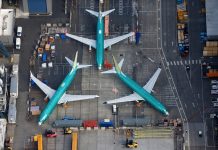
The coronavirus pandemic has devastated the meat industry for 2020. Analysts believe the industry could lose more than $20 billion in 2020.
Two major disruptions emerged on the meat supply chain. The first was the change in consumer behaviors. The closure of schools and restaurants put an entire distribution channel to a halt. The other was over 20,000 meat processing plant workers had gotten ill. Seventy-four workers died and several plants were forced to end their operations.
“I’m not sure anybody really understood sort of how to be prepared. These meatpacking plants, by their very nature, are extremely difficult to manage a human disease like this,” said Derrell Peel, a livestock marketing specialist at Oklahoma State University.
The closure of the pants led to the wholesale prices and livestock prices dropping by 20%-30%. More importantly, as demand decreased, producers had to face unprecedented bottlenecks of live animals. Some producers had to resort to euthanasia.
Defense Production Act
US President Donald Trump upheld the Defense Production Act to help ease the impact of the coronavirus crisis on the meat industry. Because of this, the plants were categorized as essential and allowed to operate. The law saved meat processing giants like JBS, Cargill, Tyson Foods, and Smithfield Foods from legal liability when their employees get sick.
Wholesale prices began falling and livestock prices were inching back by mid-May. However, concerns over a long and costly recovery persist.
″Is this a once in a century event? Should we respond accordingly? Or is this something that we need to adapt to going forward? If we think it’s going to be with us then yes, it’s a pretty fragile supply chain, mainly because we’ve focused on giving consumers what they want, high-quality food at the cheapest price possible,” said Joe Parcell, director of applied social sciences and professor of agribusiness management at the University of Missouri.
“If we were to back away from that and make it a little bit, maybe a more robust supply chain, maybe a little bit smaller processors, it’s going to cost consumers a little bit more. So there’s a trade-off there.”
At high risk
Meanwhile, a report from The Grocer revealed that 44 of the world's 60 largest meat, fish, and dairy businesses were at "high risk" of paving way for a new pandemic and potentially being hit. Issued by the Farm Animal Investment Risk & Return Initiative, the report investigated U.K.-based Cranswick PLC, Brazil-based JBS SA, Brazil-based Minerva SA, Thai Union Group PCL, and among others, based on seven criteria. These include worker safety, food safety and antibiotic use.
“It is a supply chain risk. It’s a risk of how they will ensure that the meat, fish and dairy on shelves will be there if another type of disruption of this size and scale happens again,” said Maria Lettini, executive director at FAIRR, a network of global investors.
She believes that the industry should revamp the current model of farming. “The meat industry as we know it right now is ill prepared to deal with food-related risks of this nature.”






